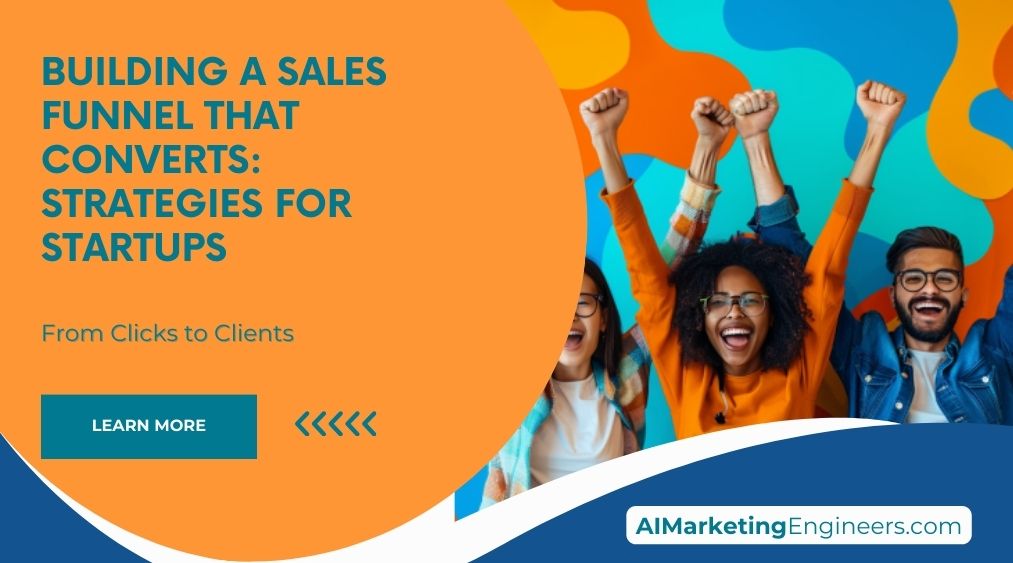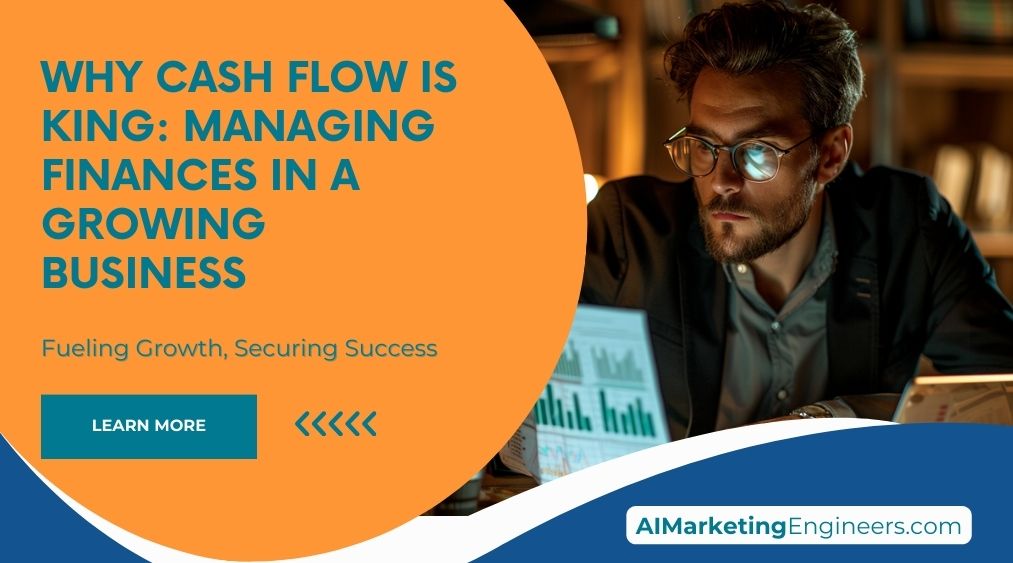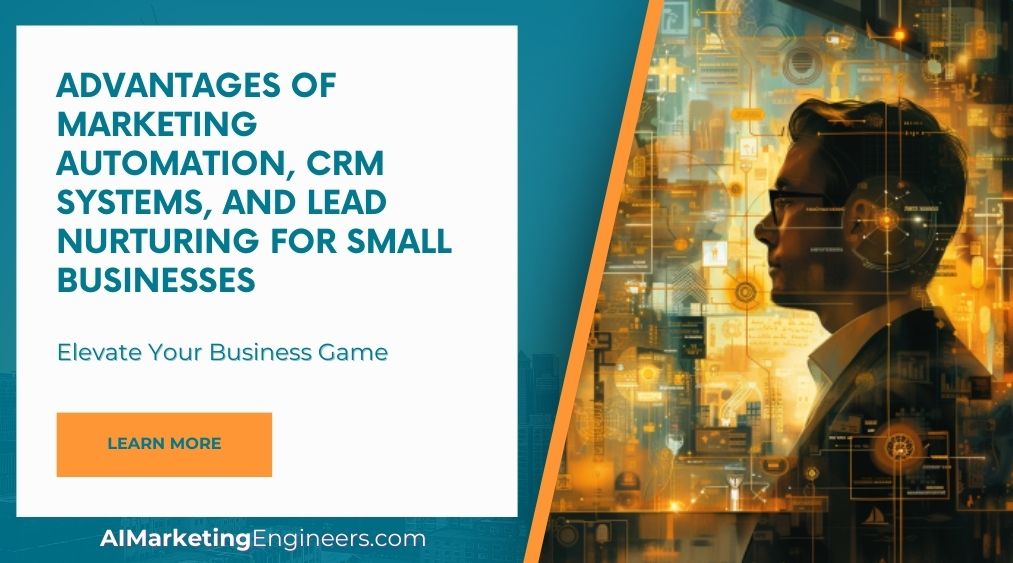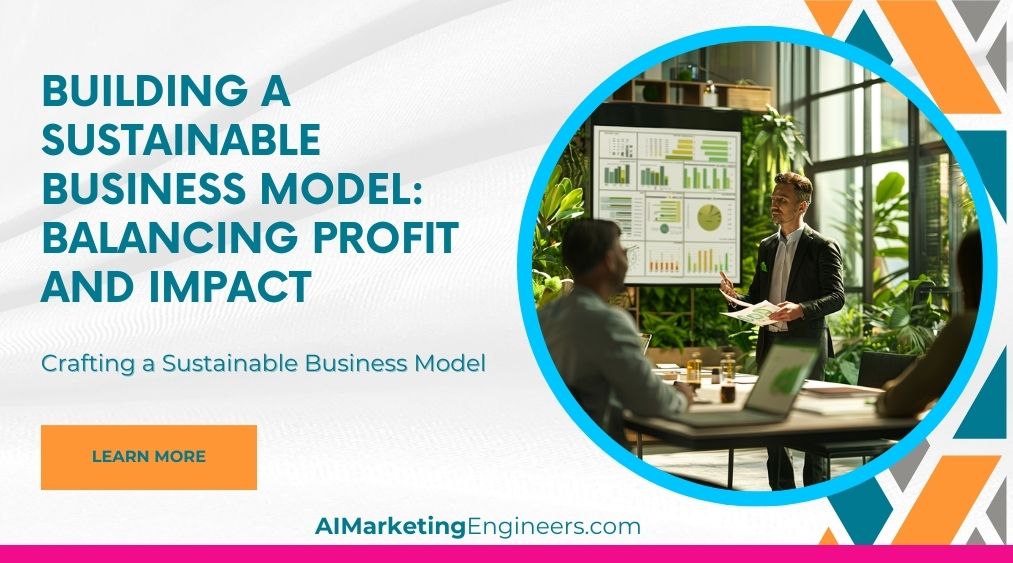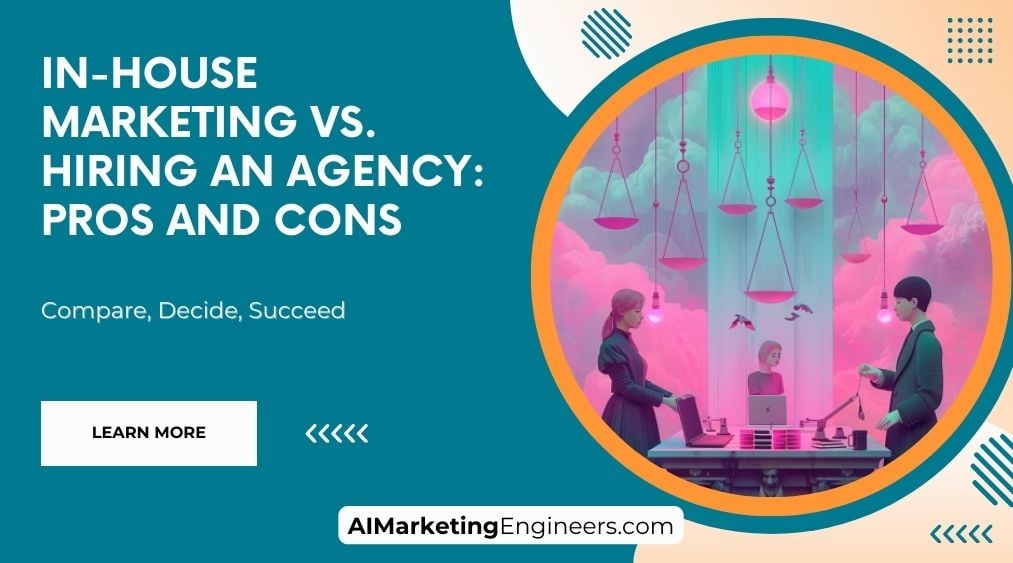Key Takeaways
✅ Define Your Target Audience and Align Your Sales Funnel: Understand your ideal customer's needs and preferences through market research and competitor analysis. Tailor your sales funnel to resonate with this audience, ensuring a seamless buying experience.
✅ Optimize Each Stage of the Sales Funnel: Utilize targeted marketing strategies for each funnel stage: awareness, interest, decision, and action. Employ content marketing, email campaigns, and customer testimonials to move leads through the funnel effectively.
✅ Continuously Refine and Improve the Sales Funnel: Regularly gather feedback and make data-driven adjustments to improve conversion rates. Focus on customer retention and upselling to build lasting relationships and loyalty.
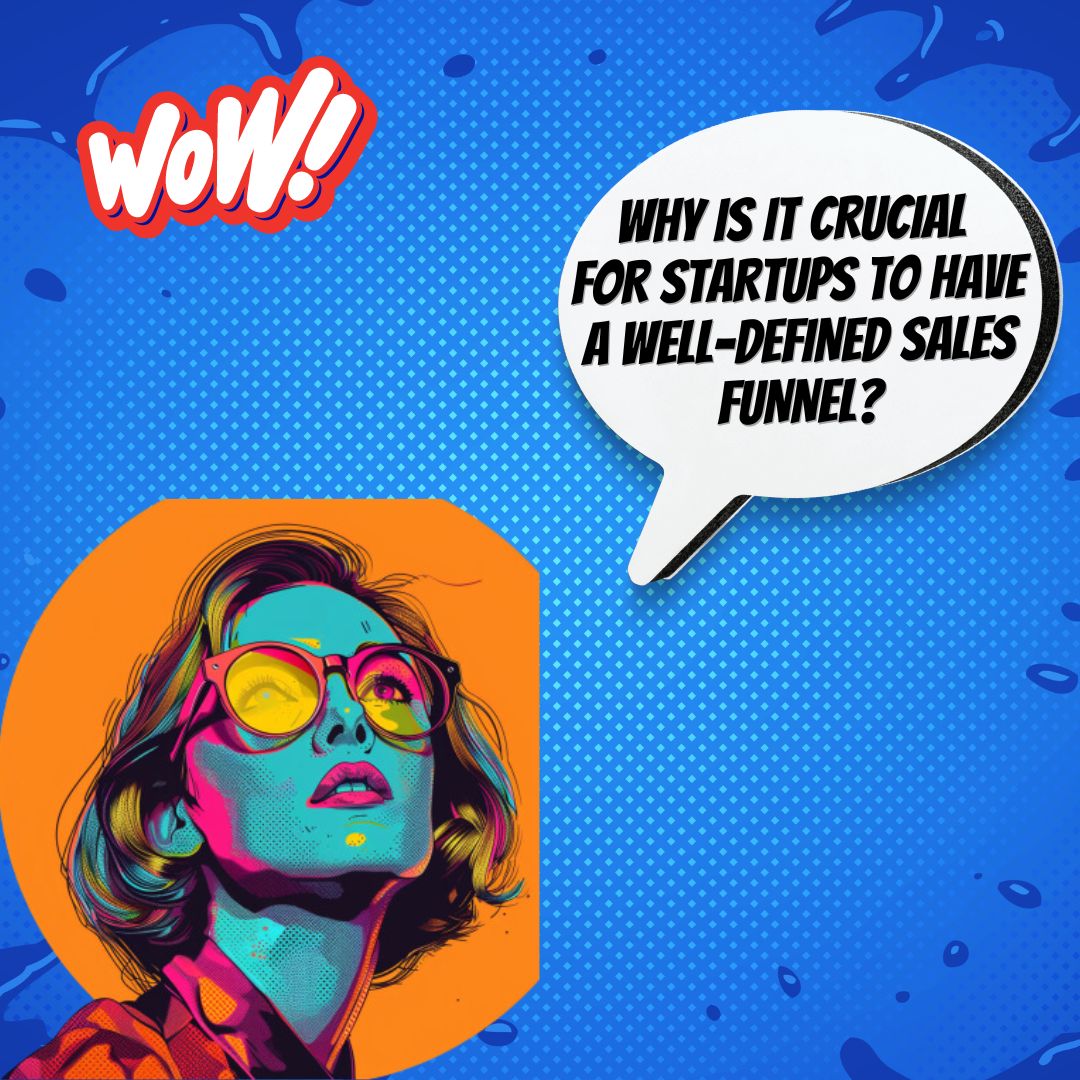
Introduction
How crucial is a well-constructed sales funnel for a startup's success? In today’s competitive marketplace, building a sales funnel that converts is not just a luxury but a necessity. A sales funnel does more than just attract leads; it guides potential customers through each stage of their buying journey, converting interest into action. Startups can greatly benefit from understanding and implementing effective sales funnel strategies to maximize their revenue and return on investment (ROI). In this article, we’ll discuss actionable insights, modern trends, and innovative solutions to help startups create a sales funnel that truly converts. Get ready to discover groundbreaking information that can take your startup from zero to hero in record time.
Top Statistics
| Statistic | Insight |
|---|---|
| 79% of marketing leads never convert into sales due to a lack of lead nurturing. | This high percentage signals the importance of lead nurturing strategies to reduce wastage of marketing efforts. |
| Companies with well-defined sales funnels increase their revenue by 28%. | A structured sales funnel ensures that there is a clear path for customers to follow, leading to higher revenue. |
| 96% of the visitors who come to your website aren’t ready to buy anything, yet. | This statistic emphasizes the need for effective strategies to move potential buyers through the funnel. Many visitors need nurturing before they’re ready to make a purchase. |
| Businesses using video grow revenue 49% faster than those who don’t. | Incorporating video content into your sales funnel can significantly accelerate revenue growth, making it a key strategy for startups. |
| 54% of social media users use these platforms to research products. | Leveraging social media for product research highlights the importance of maintaining an active and engaging social media presence. |
Understanding the Sales Funnel
A sales funnel serves as a visual guide for the customer journey, helping salespeople navigate potential customers through the purchasing process. It's especially effective in identifying and focusing on qualified leads, thereby converting them into paying customers. Typically, a sales funnel encompasses three main stages: awareness and discovery, research and consideration, and finally, decision-making.
Defining Goals and Target Market
Starting with clear and specific goals for your sales funnel is critical. Whether your aim is increasing lead generation or boosting product sales, these goals must be measurable. Understanding your target market involves empathizing with their pain points and desires, enabling you to create a funnel that resonates deeply on an emotional level.
Creating Engaging Offers and Landing Pages
Developing engaging content for each stage of the funnel is essential. This could include blog posts, videos, ebooks, or other resources designed to educate, entertain, or solve the problems of potential customers. Additionally, dedicate landing pages for each stage, optimized with clear calls-to-action to improve conversions.

Implementing Lead Magnets and Email Sequences
Using lead magnets like free ebooks, webinars, or checklists can effectively capture contact information, leading to a more personalized approach. Create email sequences tailored for each stage of the funnel, using automation to send targeted and timely messages based on user interactions.
Tracking and Iterating
To measure your funnel's performance, set up tracking tools such as Google Analytics. Regularly review the data and make data-driven adjustments to optimize the funnel. This ongoing process ensures that your sales funnel remains effective and aligned with evolving market needs.
Additional Strategies for Startups
For startups, an omnichannel approach ensures consistent messaging across all touchpoints, from web design and advertising to content marketing and sales meetings. Leveraging automation and A/B testing helps fine-tune the funnel, improving conversion rates over time. Moreover, focusing on sustained quality and engagement helps reduce churn and increase the lifetime value of customers.

AI Marketing Engineers Recommendation
Recommendation 1: Optimize Lead Generation with Personalized Content: Personalization is key when it comes to building an effective sales funnel. According to a study by Epsilon, 80% of consumers are more likely to make a purchase when brands offer personalized experiences. Use data-driven insights to understand your audience better and create content that speaks directly to their needs and interests. This can be achieved through personalized email campaigns, targeted social media ads, and tailored landing pages. By addressing the specific pain points and desires of potential customers, you increase the chances of converting leads into paying customers.
Recommendation 2: Leverage Social Proof to Build Trust: Consumers are increasingly relying on social proof when making purchasing decisions. According to BrightLocal, 91% of consumers read online reviews before buying a product. Integrating social proof elements such as customer testimonials, case studies, and user-generated content into your sales funnel can significantly boost conversions. Showcase positive feedback prominently on your website, social media platforms, and marketing materials to build credibility and trust among potential buyers. Highlighting real experiences of satisfied customers can effectively nudge hesitant leads toward making a decision.
Recommendation 3: Utilize Marketing Automation Tools for Streamlined Funnel Management: Efficiently managing a sales funnel can be challenging, particularly for startups with limited resources. Marketing automation tools like HubSpot, Mailchimp, or ActiveCampaign can streamline the process, helping you nurture leads more effectively. According to the Aberdeen Group, companies that use marketing automation see a 53% higher conversion rate from initial response to marketing-generated leads. These tools enable you to automate follow-up emails, segment your audience, track user behavior, and score leads based on their engagement level. By automating routine tasks, you can focus on crafting strategies that drive conversions and scale your business systematically.
Relevant Links
- Unlocking the Secrets of Effective Campaign Goals and Marketing Objectives
- Enhance Lead Generation with Sales Funnel Optimization and Customer Journey Insights
- Boost Your Ad Campaigns with Ad Rotation and Variation Testing
- Maximize ROI in Marketing with Data-Driven Metrics and Analytical Insights
Conclusion
Building a sales funnel that converts is indispensable for startups striving to grow in today’s competitive market. Understanding the stages of the sales funnel—from awareness to decision-making—provides a clear roadmap for guiding potential customers through their journey. Defining goals and target markets is the first critical step, ensuring the funnel resonates deeply with your audience's pain points and needs.
Creating engaging offers and landing pages tailored to each stage, using lead magnets, and implementing personalized email sequences keeps prospects invested and engaged. Tracking performance with tools like Google Analytics and making continuous, data-driven adjustments are essential for optimizing the funnel. By embracing omnichannel strategies and leveraging automation and A/B testing, startups can fine-tune their approach, enhance conversion rates, and ensure consistency across touchpoints.
Don't just build a sales funnel—master it, and let it be the engine that drives your startup's success.

FAQs
Question 1: What is a sales funnel?
Answer: A sales funnel is a visual representation of the customer journey from initial contact to the final sale. It is a set of web pages designed to move leads or potential customers towards a purchase, typically consisting of four main stages: Awareness, Interest, Decision, and Action.
Question 2: What are the different stages of a sales funnel?
Answer: The four main stages of a sales funnel are:
- Awareness: Potential customers become aware of your product or service.
- Interest: Prospects want to learn more about your product or service.
- Decision: Prospects evaluate whether to make a purchase.
- Action: The prospect becomes a customer and makes a purchase.
Question 3: What are the benefits of using a sales funnel?
Answer: Using a sales funnel provides clarity, efficiency, and increased sales. It helps focus marketing efforts, saves time and resources, and optimizes each stage to convert more prospects into paying customers. Additionally, it aids in building stronger relationships with customers.
Question 4: What are the right questions to ask in your funnel?
Answer: The right questions to ask in your funnel involve understanding the customer's needs, wants, and pain points. This includes questions about their business, competitors, and future plans. It is essential to ask broad, open-ended questions initially and then move to more specific, leading questions as the conversation progresses.
Question 5: How do you ensure the user is engaged throughout the funnel?
Answer: To ensure user engagement, use AI tools to increase productivity and create engaging experiences. This can include using drag-and-drop tools to create forms and surveys that capture user interest.
Question 6: What are effective ways to drive traffic to a sales funnel?
Answer: Effective ways to drive traffic include content marketing, paid advertising (e.g., Google Ads, Facebook Ads), and promoting content on social media and email campaigns.
Question 7: What are the best tools for building a sales funnel?
Answer: Some recommended tools for building a sales funnel include Thrivecart, ConvertBox, Drip, Deadline Funnel, and Damn Copy Templates.
Question 8: How do you answer customer questions at every stage of the funnel?
Answer: Answering customer questions at every stage involves understanding their needs and providing relevant information. This includes addressing their concerns about themselves, you, and your solution, and providing proof to establish trust and credibility.
Question 9: What are the key takeaways for building a successful sales funnel?
Answer: Key takeaways include understanding the customer journey, answering customer questions, and optimizing each stage of the funnel to convert more prospects into customers. Additionally, it is crucial to focus on building long-term relationships with customers and providing ongoing support and value.
Question 10: What are common mistakes to avoid in building a sales funnel?
Answer: Common mistakes to avoid include neglecting existing customers, not providing ongoing support and value, and not optimizing each stage of the funnel to convert more prospects into customers.

Academic References
- Persuasion Nation. (2020). Understanding the Customer Journey. This comprehensive study discusses the sales funnel as a marketing strategy guiding potential readers through steps that lead to a book purchase. Key stages include awareness, interest, desire, and action, ultimately converting strangers into loyal readers.
- Mountain. (2019). Defining the Target Audience. This work emphasizes the importance of accurately defining the target audience for building an effective sales funnel. It determines the approach's flow and helps in creating a profile of the ideal buyer, essential for the funnel's success.
- Zendesk. (2021). Creating Awareness and Interest. This article outlines the steps involved in capturing prospects' attention through targeted ads and nurturing leads with free resources and email flows during the awareness and interest stages of the sales funnel.
- Mailmunch. (2022). Nurturing Leads and Conversion. This piece focuses on moving prospects through the sales funnel until they are ready to purchase. The primary goal discussed is delivering the proper offer to prospects outside of direct sales conversations, ensuring a smooth journey through each funnel stage.
- Persuasion Nation. (2020). Optimizing the Funnel for Conversions. This study examines the optimization of sales funnels by improving landing pages, creating compelling offers, and using effective call-to-actions. Metrics like conversion rate, click-through rate, and bounce rate are highlighted as tools for identifying areas for improvement.
